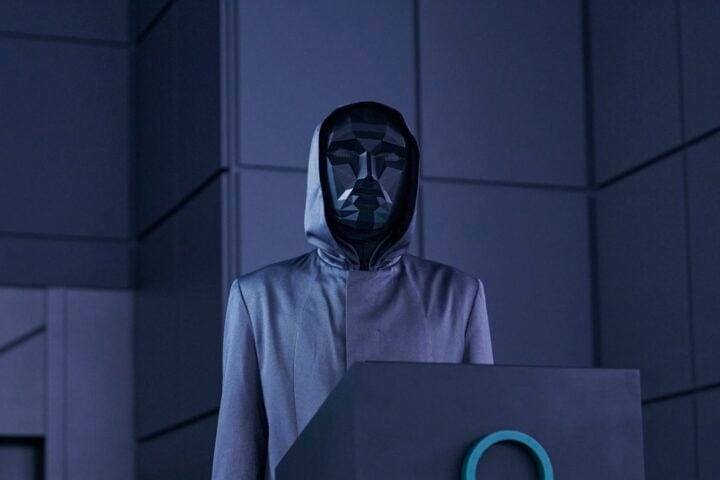Netflix’s Squid Game: The Challenge brings together 456 contestants to play through a real-life version of Squid Game, Hwang Dong-hyuk’s grim satire in which cash-strapped contestants compete in demeaning, often deadly games for money. The reality show’s participants live together in a sterile-looking dormitory outfitted with towering quadruple-decker bunk beds and file through a brightly colored maze of stairways each day to face similar, albeit nonfatal, challenges. Round by round, their numbers are whittled down until one person remains to claim the largest cash prize in reality television history: $4.56 million.
The Challenge’s contestants are drawn from around the world and a wide range of backgrounds, from former athletes and MENSA members to sports scientists, self-proclaimed nihilists, and a couple of retirees looking to prove that they’ve still got it. From this pool of characters, the producers of the show do a relatively decent job of crafting the usual reality-show narratives: Rivalries are born, alliances are formed, and backs are stabbed as the contestants try to find the right blend of cooperation and cut-throat ambition to make it to the end.
To stir the pot a little further, The Challenge also introduces tests which take place between rounds, giving contestants the chance to eliminate or aid their rivals in a variety of ways. One clever design choice is the outfitting of each contestant with a squib attached to their chest that explodes in a harmless but startling burst of ink when they’re eliminated.
Aside from the moral dubiousness of converting dystopian fiction into reality-show spectacle, The Challenge’s obvious issue is that all of the participants presumably know what to expect from each game. The first round even reinforces this sense of familiarity by having contestants compete in the very same game of “Red Light, Green Light” that their fictional counterparts did.
It turns out, though, that the show is just lulling them into a false sense of security. Subsequent rounds follow the same basic pattern as those from the original series, but each contains a twist designed to catch out players who think they know what’s coming. A contestant is never more in danger than when they think they’re safe, and these reversals are often devilishly satisfying.
That said, some of the original show’s rounds simply aren’t that entertaining when actual lives aren’t at stake. This problem is compounded by the fact that, even after the initial round cuts the player count down considerably, there are still hundreds left to be shepherded through each new challenge. Try as it might to inject the game with personal drama and mini-narratives, there’s only so much entertainment that can be mined from watching 200-odd people lick cookies.
In the end, the other big, albeit less morally thorny, problem with The Challenge is that it drags. The challenges are padded out with interviews, reaction shots, and dramatic pauses that go on long after all the tension has been released. Ultimately, these are squib games that provide enough noise and motion for a passable simulacrum of the original show’s devastating drama.
Since 2001, we've brought you uncompromising, candid takes on the world of film, music, television, video games, theater, and more. Independently owned and operated publications like Slant have been hit hard in recent years, but we’re committed to keeping our content free and accessible—meaning no paywalls or fees.
If you like what we do, please consider subscribing to our Patreon or making a donation.




